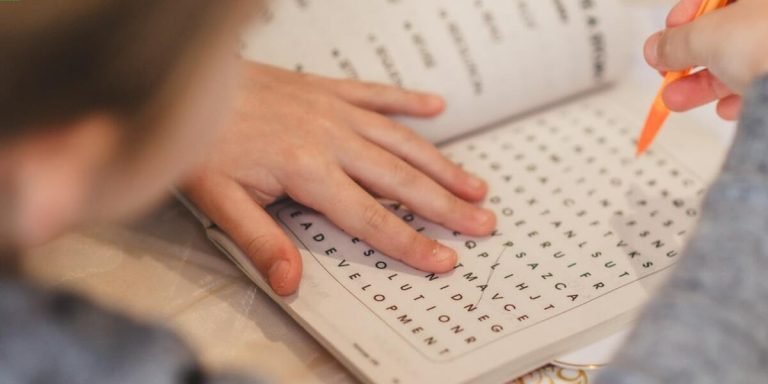First Grade Reading Level: Unlocking the Path to Fluent Literacy
A child’s journey towards literacy leaps forward once they enter first grade. This is when the foundations laid down in kindergarten start bearing fruit and actual reading skills begin to develop. The ‘first grade reading level’ signifies this crucial phase where children gradually transition from pre-readers to budding readers, growing their confidence with every new word learnt.
During first grade, your child will be exposed to a variety of texts across different genres to boost their vocabulary and comprehension abilities. While it can seem daunting initially for both parents and kids alike, fostering an encouraging environment at home plays a significant role in maintaining steady progress on the path towards fluent literacy.
Did you know?
According to the U.S. Department of Education, children who are not reading proficiently by the end of first grade are significantly more likely to struggle in later grades.
Understanding First Grade Reading Level Expectations
Understanding the expectations for a first grade reading level is key to fostering your child’s educational success in their initial years of schooling. In 2023, these expectations encompass not just word recognition and pronunciation but also comprehension skills such as making predictions about what they read next or identifying characters’ motivations within stories.
The transition from kindergarten to first grade often marks a significant shift in academic demands, especially when it comes to literacy education. Reading instruction becomes more structured than before with students typically expected to make substantial progress throughout the year. By understanding what is anticipated at this level, you can better support your young learner during this crucial period of development.
However, remember that every student progresses at their own pace – the goal shouldn’t be merely meeting benchmarks but rather nurturing an enduring love for reading itself.
This requires an approach tailored specifically towards promoting individual learning styles and interests which educators understand helps inspire genuine engagement with literature moving beyond mere surface-level decoding strategies.
In closing, understanding typical first-grade reading levels allows parents and teachers alike to provide suitable challenges while acknowledging each child’s unique capabilities thereby fostering lifelong learners who not only navigate through words on pages effortlessly but truly engage meaningfully with texts building solid foundations necessary for comprehensive literary competency later on down the line.
Recognizing Appropriate Text Complexity for First Graders
When it comes to the early years of a child’s educational journey, understanding their first grade reading level is crucial. The text they engage with at this stage should strike a balance between challenge and comprehension – too easy, and they’re under-stimulated; too difficult, and frustration may discourage them from further learning. This section aims to help parents identify appropriate text complexity for first graders.
Firstly, let’s talk about vocabulary usage in texts that are suitable for your young learner. Using words that kids encounter regularly will aid in recognition while sprinkling some unfamiliar terms can boost their language acquisition skills significantly. Aim for books where 90-95% of the words are easily recognized by your child.
The sentence length within these texts also plays an integral role in shaping up a ‘just right’ read for our budding readers. Generally speaking, sentences containing five to seven words alongside repetitive phrases offer reliable readability measures ideal typically seen at first-grade reading levels.
Next on our list – looking into relevant themes or contexts present throughout the narrative itself could make all the difference! Books featuring animals engaged in human-like activities or situations close-to-life make absorbing content easier than narratives centered around abstract concepts which might be well beyond children’s life expertise hence proving counter-productive!
Key Literacy Skills for Elementary Students
Every child’s journey to literacy begins in elementary school. The first grade represents a significant step, understanding the “first grade reading level” becomes instrumental for educators and parents.
Firstly, decoding is an essential skill at this age. It allows children to make out words by sound-letter combinations or phonics – turning ‘c-a-t’ into cat, for instance.
Comprehension follows closely behind decoding skills on the priority list of key literacy skills necessary for students achieving their first-grade reading levels goals. In essence, comprehension refers to your child’s ability not just read the text but understand its meaning holistically.
Rapid automatic naming (RAN) isn’t something that immediately comes up when talking about key literacy skills; nonetheless it plays a vital role in getting kids fluent with their readings. This involves how quickly a student can name objects like animals or colors they see often – rapid recognition aids quick word recall during reading exercises.
It’s equally important that our young learners start developing vocabulary from an early stage as well itself because knowing more words helps children decode efficiently while also improving comprehension simultaneously!
Strategies to Support Reading Proficiency in Early Education
One such strategy can be creating a print-rich environment where words are not merely confined to books but also extend into daily life objects like labels on foods or household items. This immersive exposure can foster familiarity with common words, decoding skills, and eventually enhance fluency.
Incorporating interactive technology tools designed specifically for young learners could also prove effective in bolstering their first grade reading level commitment. With 2023 witnessing an explosion of ed-tech aids tailored towards childhood education, blending traditional instruction methods with these engaging learning platforms has never been easier! We’re talking about story apps which offer read-along stories or games focusing on phonics and word recognition – giving your child ample opportunities to practice while making sure they’re having fun!
Additionally, encouraging consistent study habits remains key for steady progress through material catering to this particular educational stage. For example; short dedicated amounts of time spent each day focused on literacy activities can help keep kids engaged without overwhelming them.
Incorporating Phonics and Sight Words into Learning
Phonics and sight words are foundational elements in any early childhood education curriculum. They’re essential tools that help children reach the first grade reading level, paving their path towards effective literacy. In today’s age of rapidly evolving educational methods, here’s how you can incorporate these critical learning components into your child’s daily routine.
To start with phonics, it might be intimidating for some parents to view phonetics as a complicated linguistic model. Yet when broken down effectively, they form simple sound units called “phonemes”. To teach them successfully at home or school, make fun games like ‘I Spy’ but based on sounds instead of letters; this way kids learn while playing.
Next comes flashcards – an oldie but a goodie! Flashcard is one physical tool we mustn’t overlook whilst teaching phonics and sight words too. Having visuals connected to lexical items aids memory retention making the process easier for young minds.
Interactive tech-based solutions also encourage vast improvement in reaching first-grade reading levels especially in 2023 where technology holds more prominence than ever before apps such as ABCMouse.com give access to hundreds of lessons covering full language arts curricula including Phonics and Sight Words.
Utilizing Read-Alouds and Storytelling to Enhance Comprehension
Read-alouds and storytelling are powerful tools for helping young learners move towards a first grade reading level. They not only make the process of learning how to read more enjoyable, but they also enhance comprehension which is pivotal in early education.
Reading aloud involves an adult sharing a book or text with a child. This interactive activity allows youngsters to explore different types of literature without the pressure of having to understand every word on their own. It provides them with exposure to diverse vocabulary, complex sentence structures and stimulates their imagination – all aspects crucial in reaching that first-grade reading level.
Storytelling takes this interaction one notch higher. Here’s why:
1) Creates Familiarity: Storytelling aids children recognize words more readily as it instills repetition of certain phrases or expressions that become familiar over time.
2) Boosts Listening Skills: Children need active listening skills both inside and outside school premises; storytelling helps develop these by encouraging kids to pay attention for longer periods.
3) Enhances Understanding : By relating texts narrative elements such as plot, characters etc., storytelling develops children’s understanding about what happens within and between sentences- another important milestone towards achieving first grade proficiency!
Investing time into regular read-aloud sessions can be fruitful for educators aiming at strengthening students’ engagement levels while simultaneously working on improving their reading standards up-to-date 2023 educational methodologies.
Measuring Progress: Assessing First Graders’ Reading Abilities
In the realm of elementary school education, evaluating a first grader’s reading level serves as an essential building block in defining their academic journey. Throughout this process, teachers and parents alike play crucial roles in monitoring progress to ensure that children are on track with their reading abilities. It is not simply about determining if youngsters can recognize words or read sentences aloud; it cuts deeper into understanding comprehension skills.
Assessment methods have significantly evolved over time for measuring students’ proficiency at the first-grade reading level, especially given advancements within educational technology since 2023. Specialized tools now exist which highlight strengths and areas needing improvement while providing comprehensive data to tailor instruction suitably. These assessments assist educators in creating personalized learning environments that cater specifically to each student’s needs.
It’s also important for parents themselves to understand how these assessment results translate into practical applications at home—stimulating a love for books early on lays down strong literacy foundations besides strengthening cognitive development overall. While there might be initial struggles when embarking upon independent reading experiences, triumphs will eventually follow with consistent practice and encouragement.
Tools and Techniques for Monitoring Student Development
Understanding your child’s first-grade reading level isn’t merely about knowing if they can read or not; rather it involves understanding where exactly they stand on various facets of literacy skills like comprehension and fluency.
Today we will delve into some effective tools and techniques that can aid parents and educators alike to gauge a child’s improvement.
One overarching method includes systematic observations during regular reading sessions. This provides an unfiltered glimpse into how comfortably students are navigating through words, sentences while absorbing what they have read within class settings or at home.
An explicit tool commonly used by educators is running records – standard assessments designed to scrutinize children’s decoding abilities along with their fluency and comprehension levels. These comprehensive insights help discern growth areas on individual student’s journey towards mastering the art of reading letters forming words thereby raising confidence among young readers experiencing newfound literary freedoms.
The Role of Standardized Tests in Gauging Reading Levels
Standardized tests serve a critical role in determining first grade reading levels. They offer an objective means of assessing how well students comprehend what they read, providing valuable insight into each child’s unique learning journey.
Parents and educators widely recognize the importance of early literacy. Reading is not just about recognizing words on a page; it’s also about understanding those words’ meanings within context, forming mental pictures from them, and making connections with prior knowledge or experiences. That’s where standardized tests come to play for our young learners.
These formal assessments have been designed meticulously by experts who understand the developmental milestones expected at different ages – particularly at the first-grade level which is a significant phase in childhood education. The sophistication of these tools allows caregivers and teachers to identify if children are struggling earlier than would otherwise be possible – essentially acting as preventive checks instead of reactive measures.
Here’s why standardized testing plays such an integral part:
1) Standardizing Benchmark: These evaluations allow us to define universally recognized benchmarks that indicate average proficiency according to age group (in this case- seven-year-olds). This way we can answer “What does being at ‘first grade reading level’ mean?” It enables us tailor teaching methods more accurately hence enhancing effectiveness.
Conclusion
Transitioning from decoding to fluency, a child’s experience with reading in first grade is a significant milestone. Achieving an appropriate “first grade reading level” could be the stepping stone that unfolds endless potential of literacy for your little ones. Remember though, each child’s journey is unique and marked by its individual pace; embrace it.
Don’t stop here! Our website offers an extensive range of resources on childhood education to assist you as parents or educators every step of the way. It doesn’t end at first graders either—we’re right beside you through all stages of early learning development so stay busy browsing our platform; there are tons more nuggets applicable to your role in nurturing young minds towards blooming into well-rounded individuals.







